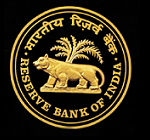The Reserve Bank of India (RBI) has now shifted its focus to the mental zone, or the area of the human brain in which expectations are created. The RBI announced its second bi-monthly policy on June 3. [1] The policy statement — which did not disappoint central bank watchers — has two parts to it.
The first part deals with slowly phasing out a relic of the past — export credit refinance — when the central bank was called upon to directly participate in the country’s growth strategy. The export credit refinance scheme was designed to encourage banks to keep providing credit to export units: it provided banks with a liquidity cushion during the short period between lending money to export units and recovering it. The refinance scheme was to ensure that banks did not suffer from shortage of money in the interim period, which could then possibly lead to a temporary credit squeeze.
While this source of liquidity is gradually choked off, RBI has opened other taps for banks to continue expanding credit to industry — it has reduced the amount that banks have to mandatorily invest in government securities, and, opened up other avenues for banks to source temporary liquidity.
But, more importantly, the pivot of this season’s policy is the mind games that RBI is playing. As expected, the central bank kept interest rates steady: with consumer inflation perking up to 8.59% in April (on the back of rising prices for fruits and vegetables) nobody expected RBI to relax interest rates.
What it has, however, done is changed its vocabulary. For instance, the document states that: “In March and April, CPI headline inflation has risen on the back of a sharp increase in food prices. Some of this price pressure will continue into May, but it is largely seasonal. Moreover, CPI inflation excluding food and fuel has been edging down.” The tonality is substantively different from the April statement, which was far more dire in tenor: “Excluding food and fuel, however, retail inflation remained sticky at around 8 per cent. This suggests that some demand pressures are still at play.”[2]
Economic theory shows that it takes longer to weed out deeply embedded inflationary expectations among economic agents — such as households or firms — than inflation itself. Inflationary expectations also have the potential of nullifying anti-inflationary action by central banks and governments: it leads to inflation-igniting actions, such as hoarding or heightened consumption in the present in anticipation of higher prices in the future, thus making the expectations self-fulfilling. One of the ways to anchor such expectations is through signalling, or through nuanced language. Central banks globally indulge in this practice.
RBI has also lobbed the ball into the government’s court: like earlier occasions, this time too it has indicated that the government has to act to reduce inflation. But, unlike occasions in the recent past, the document this time is strewn with reasons for hope and optimism. Some examples:
* A broad-based strengthening of growth is gaining traction in the U.S. and the UK, after a moderation in the first quarter of 2014…
* The decisive election result, together with improved sentiment should, however, create a conducive environment for comprehensive policy actions and a revival in aggregate demand as well as a gradual recovery of growth during the course of the year.
* Upside risks…appear at this stage to be balanced by the possibility of stronger Government action on food supply and better fiscal consolidation as well as the pass through of recent exchange rate appreciation.
* If the economy stays on this course, further policy tightening will not be warranted. On the other hand, if disinflation, adjusting for base effects, is faster than currently anticipated, it will provide headroom for an easing of the policy stance.
* As the economy recovers, investment demand and the need for credit will pick up.
Rajrishi Singhal is Senior Geoeconomics Fellow, Gateway House.
This blog was exclusively written for Gateway House: Indian Council on Global Relations. You can read more exclusive content here.
For interview requests with the author, or for permission to republish, please contact outreach@gatewayhouse.in.
© Copyright 2014 Gateway House: Indian Council on Global Relations. All rights reserved. Any unauthorized copying or reproduction is strictly prohibited
References and Endnotes:
1. Reserve Bank of India, Second Bi-Monthly Monetary Policy Statement, 2014-15, <http://rbi.org.in/scripts/BS_PressReleaseDisplay.aspx?prid=31329> (Accessed on 03 June 2014)
2. The words in italics are the author’s addition


